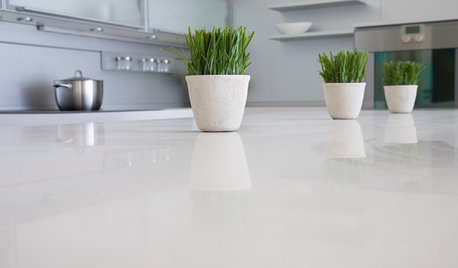So, I have bacterial speck and septoria leaf spot...
lam13
10 years ago
Related Stories

PRODUCT PICKSGuest Picks: Reflection Rainbow
Mirrors in every color offer an unexpected way to add a bright spot to walls in any room
Full Story
KITCHEN COUNTERTOPS7 Low-Maintenance Countertops for Your Dream Kitchen
Fingerprints, stains, resealing requirements ... who needs ’em? These countertop materials look great with little effort
Full Story
KITCHEN WORKBOOK8 Kitchen Amenities You'll Really Wish You Had
Keep kitchen mayhem and muck to a minimum with these terrific organizers and other time-saving, mess-preventing features
Full Story
HOUSEKEEPINGHow to Relax and Put Housework in Its Place
If household disarray is making you stressed and unhappy, try approaching it with a different point of view
Full Story
GARDENING GUIDESTop 12 Summer-Blooming Perennials for Deer-Resistant Drama
Can you have garden color, fragrance and exciting foliage with hungry deer afoot? These beauties say yes
Full Story
BLACKCooking With Color: When to Use Black in the Kitchen
Consider sampling Caviar or Cracked Pepper on your kitchen walls or cabinets for richness and impact
Full Story
KITCHEN COUNTERTOPSKitchen Countertops: Granite for Incredible Longevity
This natural stone has been around for thousands of years, and it comes in myriad color options to match any kitchen
Full Story
KITCHEN DESIGN10 Smashing Black Kitchens
Looking for something different from an all-white kitchen? Think about going stylishly dark instead
Full Story
GARDENING GUIDESGet on a Composting Kick (Hello, Free Fertilizer!)
Quit shelling out for pricey substitutes that aren’t even as good. Here’s how to give your soil the best while lightening your trash load
Full Story
KITCHEN DESIGNKitchen Counters: Stunning, Easy-Care Engineered Quartz
There's a lot to like about this durable blend of quartz and resin for kitchen countertops, and the downsides are minimal
Full StoryMore Discussions







digdirt2
lm13
Related Professionals
Pelham Landscape Contractors · Cudahy Landscape Contractors · Dunwoody Landscape Contractors · Eureka Landscape Contractors · Golden Valley Landscape Contractors · Cibolo General Contractors · Hillsboro General Contractors · Markham General Contractors · Seguin General Contractors · Bellevue Decks, Patios & Outdoor Enclosures · La Palma Decks, Patios & Outdoor Enclosures · Lincoln Decks, Patios & Outdoor Enclosures · New Lenox Decks, Patios & Outdoor Enclosures · Salisbury Decks, Patios & Outdoor Enclosures · West Bend Decks, Patios & Outdoor Enclosureskai615
lam13Original Author
kai615
lm13
ffreidl